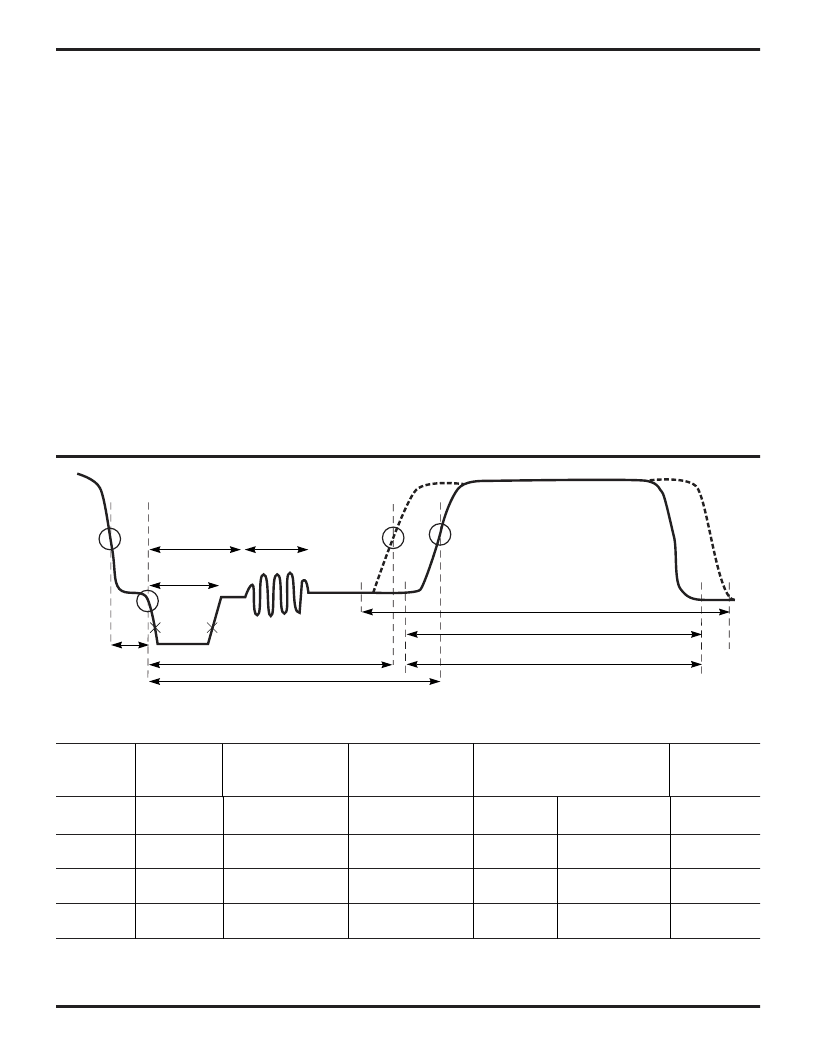- 您現(xiàn)在的位置:買賣IC網(wǎng) > PDF目錄377972 > ML6460 (Fairchild Semiconductor Corporation) CCIR656 NTSC Video Encoder(CCIR656標(biāo)準(zhǔn)NTSC視頻編碼器) PDF資料下載
參數(shù)資料
| 型號: | ML6460 |
| 廠商: | Fairchild Semiconductor Corporation |
| 英文描述: | CCIR656 NTSC Video Encoder(CCIR656標(biāo)準(zhǔn)NTSC視頻編碼器) |
| 中文描述: | CCIR656 NTSC視頻編碼器(CCIR656標(biāo)準(zhǔn)NTSC制式視頻編碼器) |
| 文件頁數(shù): | 20/30頁 |
| 文件大小: | 217K |
| 代理商: | ML6460 |
第1頁第2頁第3頁第4頁第5頁第6頁第7頁第8頁第9頁第10頁第11頁第12頁第13頁第14頁第15頁第16頁第17頁第18頁第19頁當(dāng)前第20頁第21頁第22頁第23頁第24頁第25頁第26頁第27頁第28頁第29頁第30頁

ML6460
20
REV. 1.0 10/25/2000
ANALOG_HBLANK, B24
This bit determines whether
the ML6460 is to encode for ITU_R656_compliant
"digital" or ITU_/SMPTE_compliant "analog" encoding
specifications. When this bit is cleared (B24=0), the
ML6460 is optimized for full "digital" line encoding,
where the number of active pixels is 720 for CCIR656
rates and 640 for square pixel rates. No tapering (edge
smoothing) is done to the beginning and end of the
active portion of the line. When this bit is set (B24=1),
the ML6460 is optimized for "analog" line encoding,
where the number of active pixels is 712 for CCIR656
rates and 640 for square pixel rates. The beginning and
end of the active video portion of the line is tapered
(smoothed) to minimize ringing introduced due to fast
transitions. Figure 14 below illustrates the timing
comparisons.
Note: For the square pixel rate the only difference
between "analog" and "digital" encoding is the tapering
(smoothing) at the beginning and end of the active video
portion of the line. The number of pixels encoded during
the active video portion is the same in both cases. The
positioning of the active portion is the same as in
"analog" line encoding.
FUNCTIONAL DESCRIPTION
(Continued)
ANALOG_HRESET, B23
This bit is active only in
external slave mode and when the external sync is given
at the beginning of active video. In this mode,
ANALOG_HRESET (B23) must be used in conjunction
with ANALOG_HBLANK (B23) to choose between
"analog" and digital" line encoding. The possible
approaches are summarized in Table 4 below..
FULL_BAR, B22
This bit is used to program the ML6460
to encode in normal modes or 100% amplitude video
(100% color bar). When this bit is set (B22=1), the
ML6460 is ready to handle 100% color bars. With 75%
amplitude signals, this bit should be cleared (B22=0) for
optimum signal to noise performance.
JAPAN_BLANK, B21
This bit is used to program the
ML6460 to encode Japanese NTSC by removing the 7.5
IRE setup in blanking and thus boosting the gain of luma
and chroma DACs. This bit is set (B21=1) to handle
Japanese NTSC modes.
Figure 14. Timing of Horizontal Blanking Interval and Active Video
ANALOG_
HRESET
B23
0
ANALOG_
HBLANK
B24
0
RECOMMENDED
ENCODING
TIME BETWEEN
H_SYNC AND
ACTIVE VIDEO
9μs
PIXELS
ENCODED
EDGE
SMOOTHING
(B24 = 1)
none
CCIR 656
720
SQUARE PIXEL
640
ITU-R656
Digital TV Line
Optional
0
1
9μs + 4pixels
= 9.3μs
712
640
Yes
See Note 1
1
0
Not
Recommended
ITU-R/SMPTE
Analog
1
1
9μs + 4pixels
= 9.3μs
712
640
Yes
See Note 2
Note 1:
Ignore first four and last four pixels.
Note 2:
Ignore last eight pixels.
Table 4. Video Encoding Standards and Horizontal/Active Video Timing
1.56μs
9μs
9μs + 4 PIXELS
CCIR656 DIGITAL LINE ENCODING: 720 PIXELS, 1440 TCLKs
CCIR656 ANALOG LINE ENCODING: 712 PIXELS, 1424 TCLKs
SQUARE PIXEL ANALOG AND
DIGITAL ENCODING: 640 PIXELS, 1280 TCLKs
4.7μs
5.3μs
9 CYCLES
相關(guān)PDF資料 |
PDF描述 |
|---|---|
| ML6509 | Active SCSI Terminator(SCSI系統(tǒng)的有源終端器) |
| ML6510 | Series Programmable Adaptive Clock Manager(系列可編程自適應(yīng)時鐘管理器) |
| ML6516244 | 16-Bit Buffer/Line Driver with 3-State Outputs(BiCMOS 16位緩沖器/線驅(qū)動器(三態(tài)輸出)) |
| ML6518 | 18 Line Hot-Insertable Active SCSI Terminator(線熱插入有源SCSI終端器) |
| ML65244 | High Speed Dual Quad Buffer/Line Drivers(高速雙通道四緩沖器/線驅(qū)動器) |
相關(guān)代理商/技術(shù)參數(shù) |
參數(shù)描述 |
|---|---|
| ML6460CS | 制造商:MICRO-LINEAR 制造商全稱:MICRO-LINEAR 功能描述:NTSC Video Encoder with Macrovision |
| ML6461 | 制造商:MICRO-LINEAR 制造商全稱:MICRO-LINEAR 功能描述:NTSC Video Encoder |
| ML6461CS | 制造商:MICRO-LINEAR 制造商全稱:MICRO-LINEAR 功能描述:NTSC Video Encoder |
| ML648PTA102MLZ | 制造商:COILCRAFT 制造商全稱:Coilcraft lnc. 功能描述:High Reliability Power Inductors |
| ML64P168 | 制造商:OKI 制造商全稱:OKI electronic componets 功能描述:4-Bit Microcontroller with Built-in RC Oscillation Type A/D Converter and LCD Driver |
發(fā)布緊急采購,3分鐘左右您將得到回復(fù)。